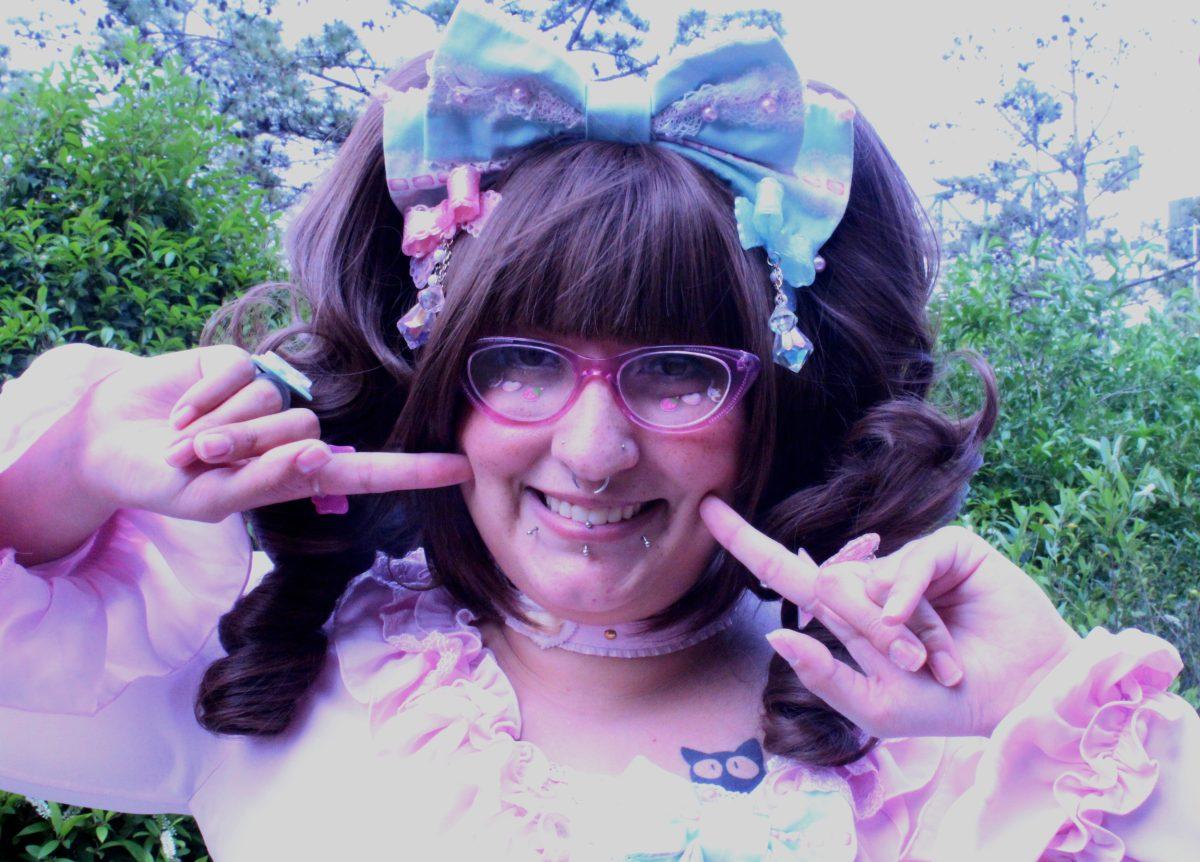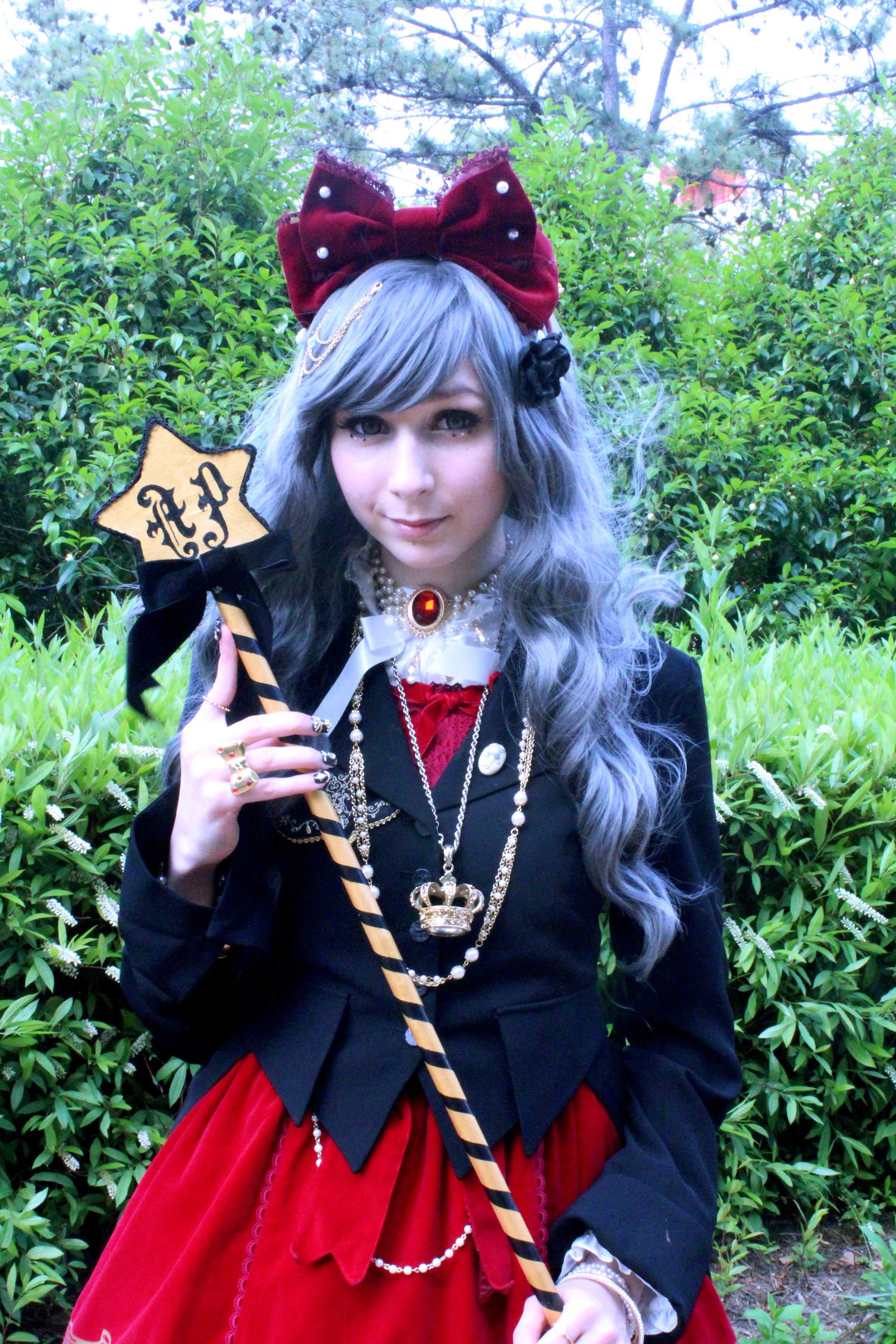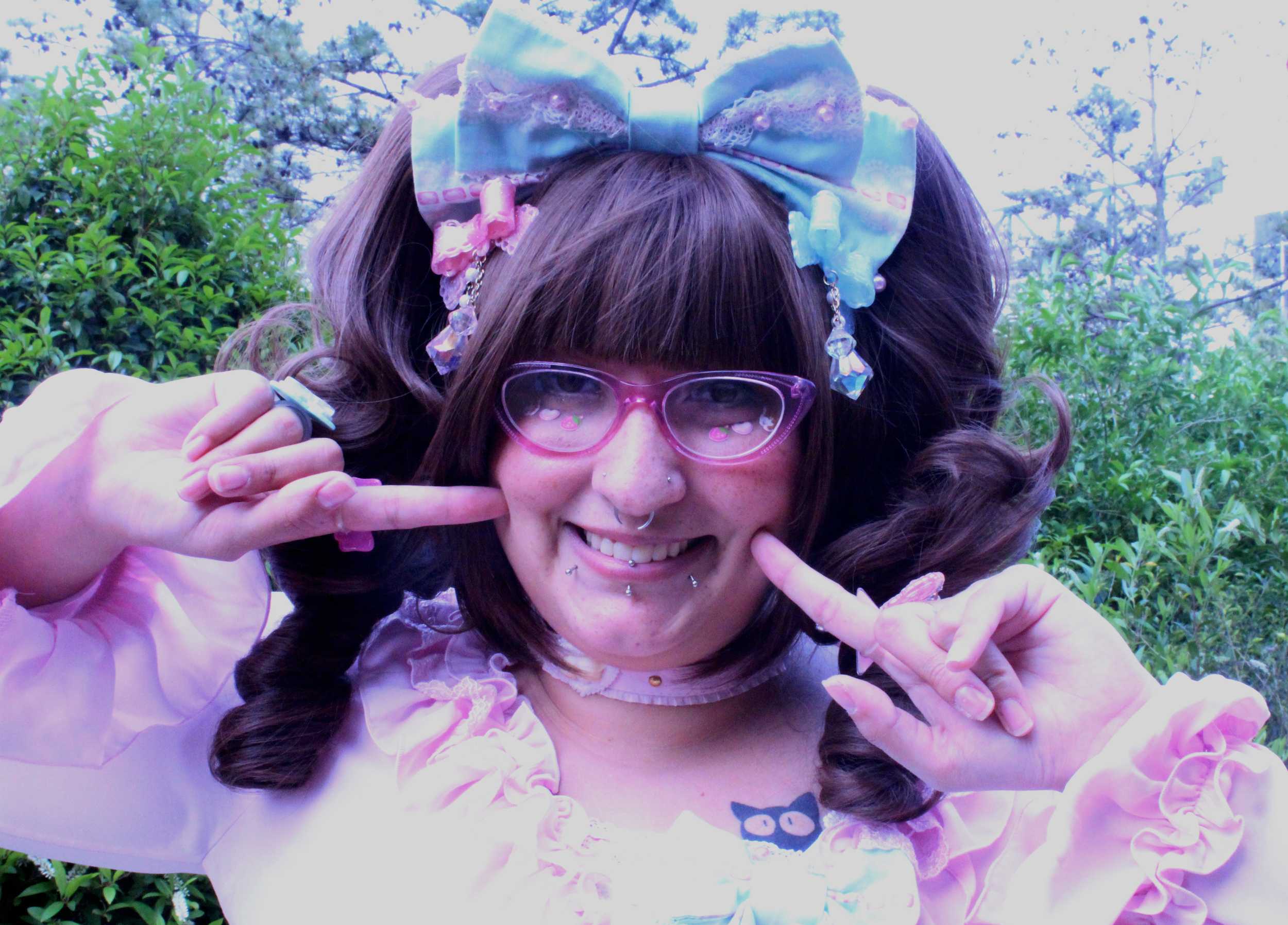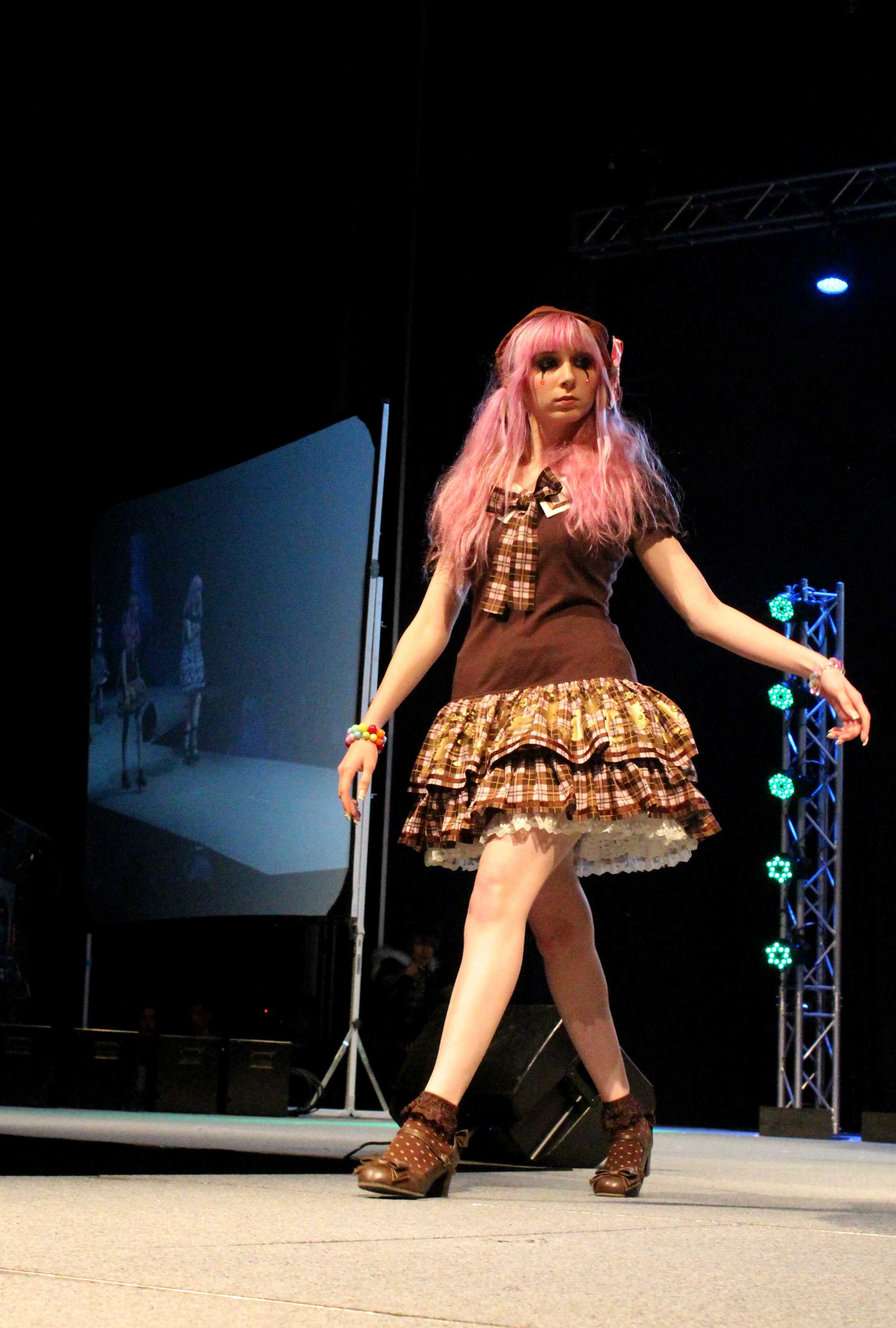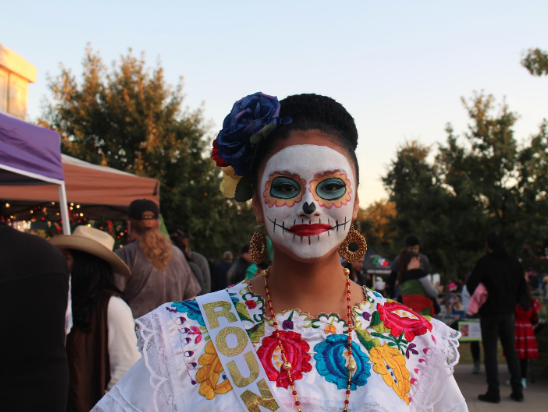Becky Maset poses in a Lolita coordinate she put together. Lolitas put together outfits in coordinating colors and patterns.
By Catherine Alvarado
At the end of a long hallway on the third floor of Jester, a door is propped open. Japanese pop music floats down the corridor. Inside, a group of elegantly-dressed students in ruffled skirts and curled wigs huddle around a desk, fishing through a bowl of charms and deco pieces. Against a far wall, a Hello Kitty teapot boils water for tea. The students photograph each other’s outfits and talk animatedly. The main topic of conversation: Lolita fashion.
The term Lolita refers not the novel by Vladimir Nabokov, but to a Japanese fashion subculture with an emphasis on modesty and high-quality materials.
“It’s just kind of a fusion of historical fashion with modern cuts to make it more wearable,” says Becky Maset, communication and news officer of the Japanese Street Fashion Club at the University of Texas. “It’s based on Victorian, Edwardian and Rococo styles. It’s almost a casual version of historical costuming, but it’s definitely not costuming. It is its own unique style.”
There are several different sub-styles of Lolita fashion, but the common characteristics are stockings, large hair accessories and dresses or skirts with a bell-shaped or A-line silhouette. The completed look is called a “coordinate” or “coord” for short, the name coming from the coordinating colors used to pull an outfit together.
Lolita started quietly in Japan in the 1970s, and eventually caught on in the streets of Tokyo. From there, Lolita has slowly expanded worldwide with fashion scenes in France, Mexico, Canada, the U.S. and others.
Mylo Merritt is President of UT’s Japanese Street Fashion Group. Merritt describes her personal style as hyper-sweet Lolita.
Lolita isn’t just about looking cute and wearing pretty dresses. There is a growing community behind the frills. Lolita fashion can often be seen at anime conventions or Japanese festivals, but there is also a thriving Lolita culture in Austin. Groups like ATX Lolitas serve the community at large, but UT’s Japanese Street Fashion Club serves UT students with a passion for lace and petticoats. Mylo Merritt, a fifth-year social work major, started the club this past fall by as a way to bring together Lolita and street fashion-enthusiasts at UT. “I wanted to take advantage of all the resources UT has and bring Japanese street fashion to UT in a way that would spread it,” she says.
The JSFC is different from other Lolita communities in that it was not created with specifically Lolita fashion in mind. The club also welcomes enthusiasts of visual kei, decora and mori, among others. “We have more inclusive fashion,” Merritt says. “We have a wider range.”
Merritt, like several of her fellow club members, caught her first glimpse of Lolita fashion at an anime convention. These conventions tend to gather hundreds and thousands of people, all interested in Japanese art and culture. They’re popular destinations to showcase Japanese street style.
Becky Maset walks down the runway at Anime Matsuri’s Lolita fashion show. Anime Matsuri hosts the largest Japanese fashion show in the United States.
Anime Matsuri, an anime convention based in Houston, Texas, is well known for its Lolita-friendly programming. In addition to putting on the largest Japanese fashion show in the U.S., Anime Matsuri also hosts a tea party featuring members of the Japanese Lolita Association, a global network of Lolitas whose mission is simply to “spread love and knowledge of Lolita fashion all across the globe.”
Both Merritt and Maset attended the weekend-long convention, with Maset walking the fashion show and helping plan the tea party. “Conventions are kind of like a mini-vacation with a lot of like-minded people so that you can just have fun there and you know that nobody will judge you,” says Maset. “Just being around people that understand what you’re wearing, why you’re wearing it and why you love it so much. That’s always just such a blast.”
Conventions are not only opportunities to expand one’s social circle — they also are a great time to expand one’s closet. Many Japanese art and culture conventions host Japanese brands in their dealer halls, allowing Lolitas the rare opportunity to purchase pieces for their wardrobe in person without going through an auction site or shopping service online. Many Japanese brands don’t ship overseas, so a third party is needed to bring the fashion across the globe.
But brand-name Lolita fashion comes with a hefty price tag. For the Lolita on a budget, online thrift shopping is the way to go. “There are Facebook groups specifically for selling pre-owned items,” explains Vân Nông, psychology freshman and member of the JSFC. “There’s also a LiveJournal community called EGL Community Sales, which is where people post things that they don’t wear anymore. It’s actually pretty active, with several posts a day.”
Like the online sales groups, a Lolita’s wardrobe is ever-changing. “You sell the old things that you don’t like anymore, and you find new things that are really cute,” Nông says. “It’s definitely always a work-in-progress. You’re definitely always collecting new items to add to your wardrobe.”
While club members do love to show off their impressive clothing collections, many say that Lolita doesn’t have to be worn every day. Maset, who used to wear Lolita fashion daily, now wears it about three or four times a week and keeps her love of the cute fashion culture alive through the JSFC. “It’s a way to keep it in your life,” she says. “I think it’s a great way to keep your passion about it even while you’re in college.”
To learn more about Austin’s Lolita community, check out the JSFC and ATX Lolitas Facebook pages. The JSFC will host a Lolita 101 meeting on Thursday, April 16.































